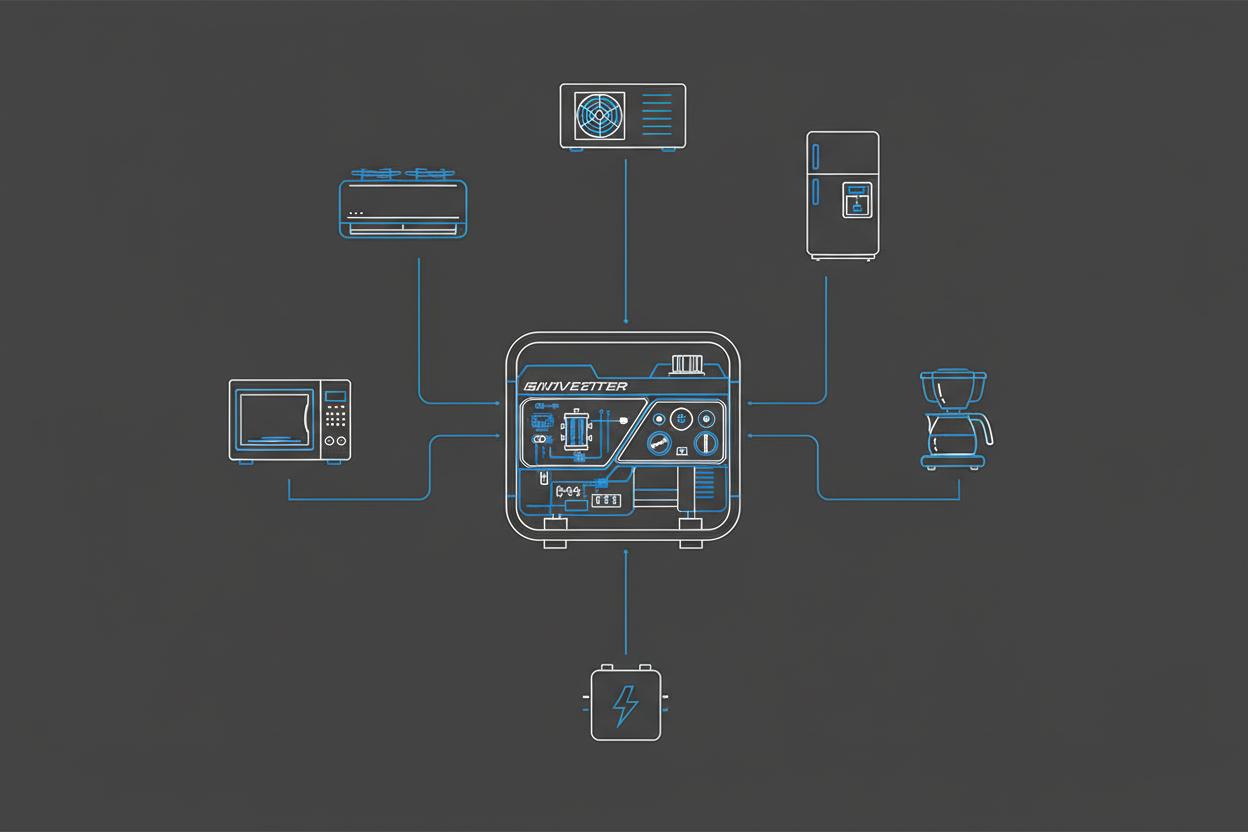RV Generator Power Requirements: Understanding Running and Starting Watts
Choosing the right generator for an RV begins with understanding power requirements. Every RV appliance draws specific running watts and may also require higher starting watts. This guide explains how RV loads work so you can size your generator correctly.
Running Watts vs Starting Watts
RV appliances consume two types of wattage.
- Running watts are the continuous power needed during normal operation.
- Starting watts are the surge power required when motors or compressors begin running.
Air conditioners, refrigerators, and water pumps often need a surge that is much higher than their running draw. Your generator must support both values to prevent overload trips.
Common RV Appliance Wattage Requirements
| Appliance | Starting Watts | Running Watts |
|---|---|---|
| RV AC (13,500 BTU) | 1,600–2,200 | 1,100–1,500 |
| Refrigerator | 600–800 | 150–300 |
| Microwave | 1,000–1,500 | 1,000–1,500 |
| Coffee Maker | 800–1,000 | 600–900 |
| Toaster | 0 | 800–1,500 |
| CPAP Machine | 0 | 30–60 |
| LED Lighting | 0 | 10–30 |
In most RV setups, the air conditioner is the biggest power driver, so generator sizing usually begins with AC requirements.
Total RV Load Planning
To size a generator, add the running watts of everything you want to use at the same time. Then add the single largest starting wattage from your list. This method covers the worst surge event without overloading your generator.
Example load:
- AC running: 1,300W
- Refrigerator running: 200W
- Microwave running: 1,200W
Total running load: 2,700W
Highest surge: 2,200W from the AC
A generator rated around 3,000W running with roughly 4,000W peak capacity is a realistic match for this setup.

Recommended Generator Sizes by RV Type
Small Travel Trailers
Small trailers without air conditioning often run comfortably on 2000–2400W inverter generators. These cover lights, charging, a small fridge, and basic kitchen loads.
Travel Trailers and Motorhomes
RVs with a 13,500 BTU air conditioner typically need 3500–4500W generators to handle compressor surge and normal travel loads.
Large RVs and Fifth Wheels
Larger rigs or multiple appliances may require 4500–6500W units or a parallel-capable setup for higher combined surge headroom.
Soft-Start Modules Reduce Surge Requirements
A soft-start module on your RV air conditioner can reduce startup surge dramatically. That makes mid-size generators more reliable for AC use and improves overall fuel economy.
Parallel Capability as an Expansion Option
Parallel-ready inverter generators let you connect two smaller units for more wattage when needed. Two 2000W generators often combine to roughly 4000–4500W, enough for many RV AC setups.
This option improves portability and gives you a backup unit if one generator needs service.
Conclusion
RV generator sizing depends on both running watts and starting surge. Air conditioners usually set the minimum generator class, while kitchen appliances and charging loads fill out the running total. Accurate load planning prevents shutdowns and ensures stable power on the road.
